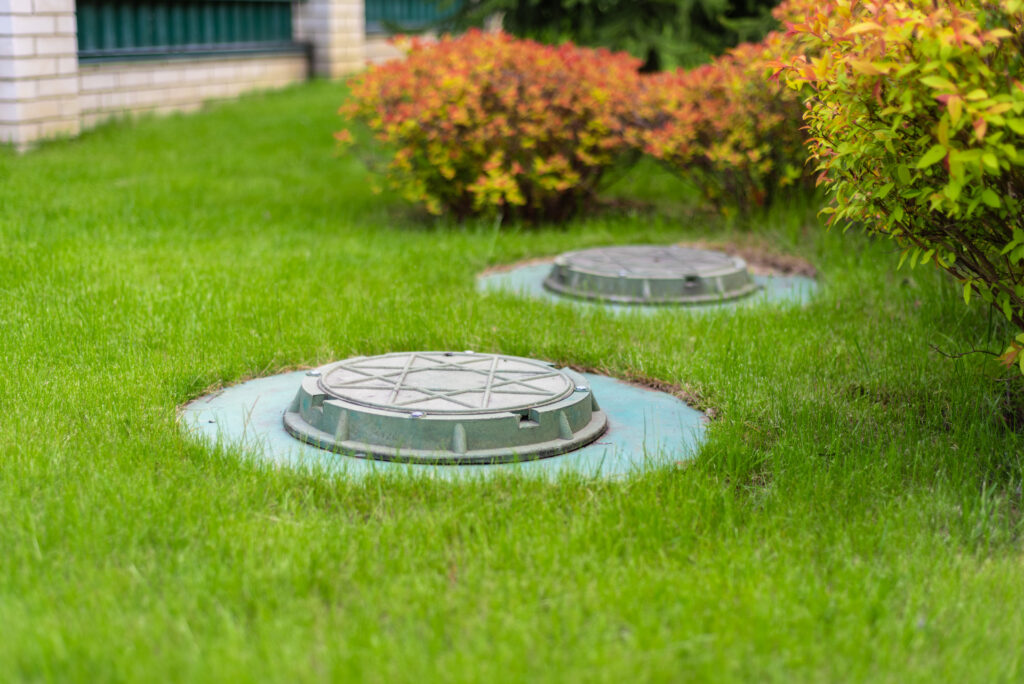In
Upstate New York, many homes rely on septic systems for wastewater management, offering a sustainable and efficient solution for rural and suburban properties. Understanding how a typical septic system works is essential for homeowners to maintain system health, prevent issues, and ensure environmental protection. In this blog post, we’ll dive into the workings of a typical septic system in Upstate NY, from wastewater treatment to maintenance tips for optimal performance.
- Components of a Septic System:
- Septic Tank: The septic tank is a buried, watertight container that receives and temporarily holds wastewater from the home. It allows solids to settle at the bottom (sludge) and oils and grease to float to the top (scum), while clarified liquid (effluent) flows into the drain field.
- Distribution Box: The distribution box distributes effluent evenly to the drain field pipes for absorption into the soil.
- Drain Field: The drain field consists of perforated pipes buried in trenches filled with gravel or aggregate. Effluent from the septic tank flows into the drain field, where it undergoes further treatment as it percolates through the soil and is filtered and purified.
- Wastewater Treatment Process:
- Primary Treatment: Wastewater enters the septic tank, where solids settle and are decomposed by anaerobic bacteria, reducing the volume of solids in the tank.
- Secondary Treatment: Clarified effluent flows into the drain field, where it undergoes biological and physical filtration as it percolates through soil layers. Soil microorganisms further treat the effluent, removing pathogens, nutrients, and contaminants before it reaches groundwater.
- Tertiary Treatment (Optional): Some septic systems may include additional treatment components such as aerobic treatment units (ATUs), effluent filters, or advanced treatment technologies for enhanced effluent quality.
- Maintenance and Care Tips:
- Regular Pumping: Schedule regular septic tank pumping every 3 to 5 years or as recommended by a professional septic service provider to remove accumulated solids and prevent tank overflow.
- Effluent Monitoring: Monitor effluent levels in the septic tank to ensure proper functioning and avoid excessive solids buildup or hydraulic overload.
- Water Conservation: Practice water conservation measures to reduce water usage, minimize strain on the septic system, and maintain proper hydraulic balance.
- Avoid Harsh Chemicals: Avoid flushing non-biodegradable items, harsh chemicals, grease, oils, and excessive solids into the septic system, as they can disrupt bacterial activity and clog drain field pipes.
- Landscaping Considerations: Avoid planting trees, shrubs, or structures near the drain field that can interfere with drainage or root intrusion into pipes.
- Regular Inspections: Conduct regular septic system inspections by qualified professionals to check for leaks, structural integrity, effluent quality, and overall system health.
- Environmental Impact and Compliance:
- Environmental Protection: Properly functioning septic systems play a crucial role in protecting groundwater quality, preventing surface water contamination, and preserving ecosystems in Upstate NY’s rural and suburban areas.
- Regulatory Compliance: Familiarize yourself with local and state regulations, permits, and requirements for septic system installation, maintenance, and upgrades to ensure compliance with environmental standards and health regulations.
- Professional Services and Support:
- Septic Tank Pumping: Hire licensed septic tank pumping services for routine maintenance, tank inspections, and solids removal to prevent system failures and backups.
- Septic System Inspections: Schedule professional septic system inspections for thorough assessments, diagnostics, and recommendations for system upgrades or repairs as needed.
By understanding the components, functioning, and maintenance requirements of a typical septic system in Upstate NY, homeowners can ensure efficient wastewater management, environmental stewardship, and long-term system performance. Proactive maintenance, regular inspections, and adherence to best practices contribute to a healthy and sustainable septic system that serves homes and communities effectively.

